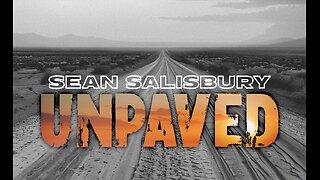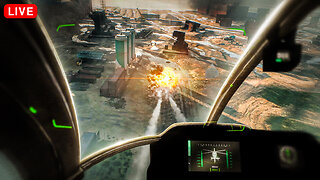Premium Only Content

FINGER PIANO or MBIRA- Cool and Unique Instruments You Can Play
We're back with another cool and unique instrument, the fun to play FINGER PIANO, or the MBIRA! If you have experience playing one, leave us a link to a video of your performance!
This video is a part of our music instruments and collectibles series. Let us know what rare memorabilia and instruments you have come across!
As always, if you like this video, please give us a thumbs up and click Subscribe and the notification bell to keep up with our Artists Spotlights, Interviews, and other fun videos. Love you all! God bless!
Also, don’t forget to check out Inspiring How UC That on our other platforms:
Website Links: https://ihuct.org/
Youtube: https://www.youtube.com/@InspiringHowUCThat
Facebook: https://www.facebook.com/inspiringhowUCthat
Instagram: https://www.instagram.com/inspiringhowucthat/
Twitter: https://twitter.com/IHUCT
Tiktok: https://www.tiktok.com/@ihuct
Rumble: https://rumble.com/user/IHUCT
E-mail: inspiringhowucthat@gmail.com
#fingerpiano #mbira #Instruments #InspiringHowUCThat #brianandkevin #uniqueinstruments #drumset #awesomeinstruments #ancientinstruments #musicalinstruments #fyp
*Copyright Disclaimer Under Section 107 of the Copyright Act 1976, allowance is made for "fair use" for purposes such as criticism, comment, news reporting, teaching, scholarship, and research. Fair use is a use permitted by copyright statute that might otherwise be infringing. Non-profit, educational or personal use tips the balance in favor of fair use. No copyright infringement intended. ALL RIGHTS BELONG TO THEIR RESPECTIVE OWNERS*
Information on the Mbira from Wikipedia (https://en.wikipedia.org/wiki/Mbira):
Mbira (/əmˈbɪərə/ əm-BEER-ə) are a family of musical instruments, traditional to the Shona people of Zimbabwe. They consist of a wooden board (often fitted with a resonator) with attached staggered metal tines, played by holding the instrument in the hands and plucking the tines with the thumbs (at minimum), the right forefinger (most mbira), and sometimes the left forefinger. Musicologists classify it as a lamellaphone, part of the plucked idiophone family of musical instruments. In Eastern and Southern Africa, there are many kinds of mbira, often accompanied by the hosho, a percussion instrument. It is often an important instrument played at religious ceremonies, weddings, and other social gatherings. The "Art of crafting and playing Mbira/Sansi, the finger-plucking traditional musical instrument in Malawi and Zimbabwe" was added to the UNESCO Representative List of the Intangible Cultural Heritage of Humanity in 2020.
A modern interpretation of the instrument, the kalimba, was commercially produced and exported by ethnomusicologist Hugh Tracey in the late 1950s, popularising similar instruments outside of Africa. Tracey's design was modeled after the mbira nyunga nyunga and named ''Kalimba'' after an ancient predecessor of the mbira family of instruments. The kalimba is basically a westernized younger version of mbira. It was popularized in the 1960s and early 1970s largely due to the successes of such musicians as Maurice White of the band Earth, Wind and Fire and Thomas Mapfumo in the 1970s. These musicians included mbira on stage accompanying modern rock instruments such as electric guitar and bass, drum kit, and horns. Their arrangements included numerous songs directly drawn from traditional mbira repertoire. Other notable influencers bringing mbira music out of Africa are: Dumisani Maraire, who brought marimba and karimba music to the American Pacific Northwest; Ephat Mujuru, who was one of the pioneer teachers of mbira dzavadzimu in the United States; and the writings and recordings of Zimbabwean musicians made by Paul Berliner. Claire Jones, a student of Dumisani Maraire in the 1970s, has been playing and teaching mbira for more than 40 years. She is also a Festival Coordinator for Zimfest, a Zimbabwean Music Festival held annually in North America that offers many opportunities to learn and listen to mbira.
Joseph H. Howard and Babatunde Olatunji have both suggested that mbira (and other metal lamellaphones) are thoroughly African, being found only in areas populated by Africans or their descendants. Similar instruments were reported to be used in Okpuje, Nsukka area of the south eastern part of Nigeria in the early 1900s.
-
 1:58:54
1:58:54
The Charlie Kirk Show
3 hours agoThe Obamagate Grand Jury + The Mamdani/Warren Alliance | Prof. Steele, Brand | 8.5.2025
53.4K25 -
 1:20:03
1:20:03
Sean Unpaved
3 hours agoNFL Coaching Edge: Top Staffs, Rookie Head Coaches, & NFC South Breakdown
23.5K -
 LIVE
LIVE
Viss
4 hours ago🔴LIVE - Adrenaline Infused PUBG Tactics The Get Wins! - PUBG
262 watching -
 16:22
16:22
Clickbait Wasteland
19 hours ago $1.20 earnedAsking New Yorkers Who They Support For Mayor: Upper West Side
15.2K8 -
 LIVE
LIVE
StoneMountain64
2 hours agoBATTLEFIELD 6 BETA Training and Prepping
139 watching -
 38:51
38:51
Members Club
2 hours ago $0.48 earnedWNBA Madness, Biohacker Oversharing, & Red-Pilled Denim
17.7K3 -
 2:07:23
2:07:23
Side Scrollers Podcast
4 hours agoCENSORSHIP PUSH JUST HIT OVERDRIVE, H3H3 LAWSUIT EXPOSES REDDIT MODS + MORE | SIDE SCROLLERS LIVE
16.9K1 -
 1:22:36
1:22:36
Simply Bitcoin
4 hours ago $1.53 earnedBREAKING: Trump ENDS Bankers ATTACK on YOUR SAVINGS! | EP 1303
15.9K10 -
 1:01:27
1:01:27
Timcast
4 hours agoTrump Asylum Ban HALTED By Judge, DOJ Could ESCALATE To Supreme Court
146K90 -
 2:07:39
2:07:39
Steven Crowder
6 hours agoIs America First Dead?
362K356